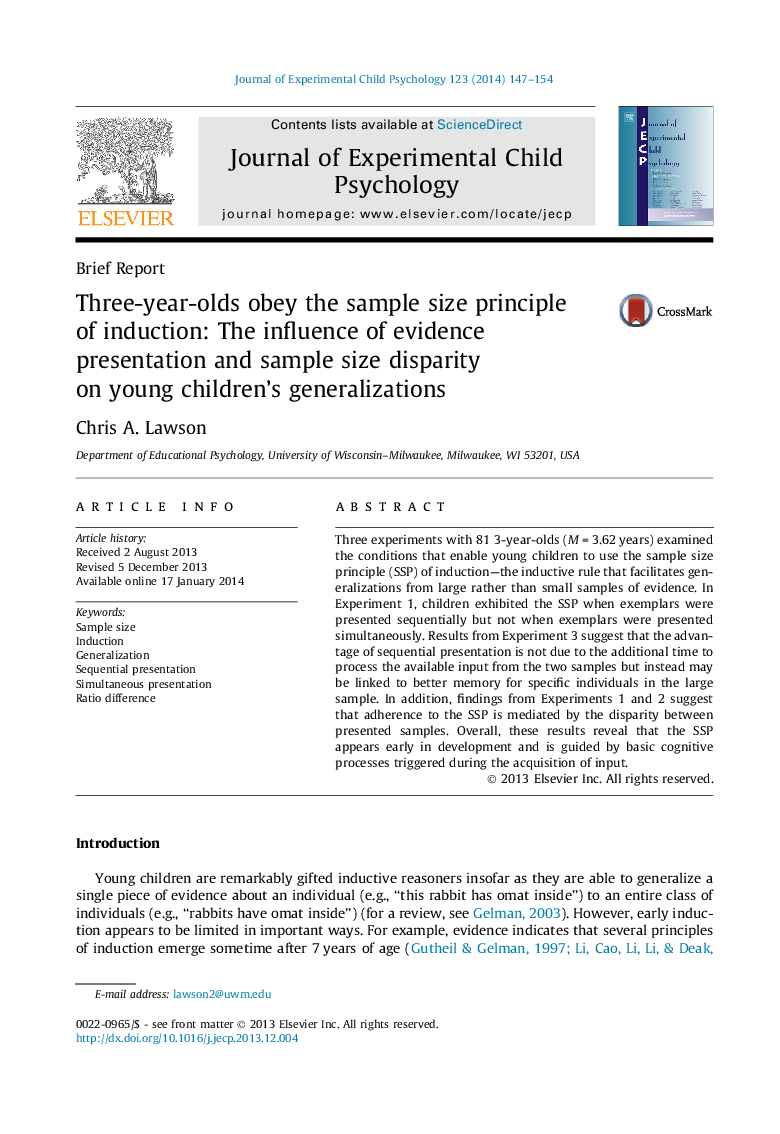| Article ID | Journal | Published Year | Pages | File Type |
|---|---|---|---|---|
| 7275541 | Journal of Experimental Child Psychology | 2014 | 8 Pages |
Abstract
Three experiments with 81 3-year-olds (MÂ =Â 3.62Â years) examined the conditions that enable young children to use the sample size principle (SSP) of induction-the inductive rule that facilitates generalizations from large rather than small samples of evidence. In Experiment 1, children exhibited the SSP when exemplars were presented sequentially but not when exemplars were presented simultaneously. Results from Experiment 3 suggest that the advantage of sequential presentation is not due to the additional time to process the available input from the two samples but instead may be linked to better memory for specific individuals in the large sample. In addition, findings from Experiments 1 and 2 suggest that adherence to the SSP is mediated by the disparity between presented samples. Overall, these results reveal that the SSP appears early in development and is guided by basic cognitive processes triggered during the acquisition of input.
Related Topics
Social Sciences and Humanities
Psychology
Developmental and Educational Psychology
Authors
Chris A. Lawson,
